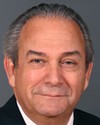Thank you, Madam Chair.
Ms. Gauvin, I want to stay on the same topic as my colleague who was inquiring on first nations. My question concerns the presence of visible minorities within your agency. A few days ago, I heard news of a suicide at Canadian Heritage; the deceased had been refused a promotion. The person was Canadian, of course, and of Haitian origin. That led me to reflect at length on the issue, as I have also heard of other employees, who are black and who were refused positions for which I thought they were very qualified. This does not concern you, but I'm simply providing context to my question.
As regards employment equity legislation, what figures could you provide showing the presence of visible minorities employed by the Canada Revenue Agency throughout Canada? Secondly, what is the turnover rate for visible minorities in Canada? Those are my first questions.





